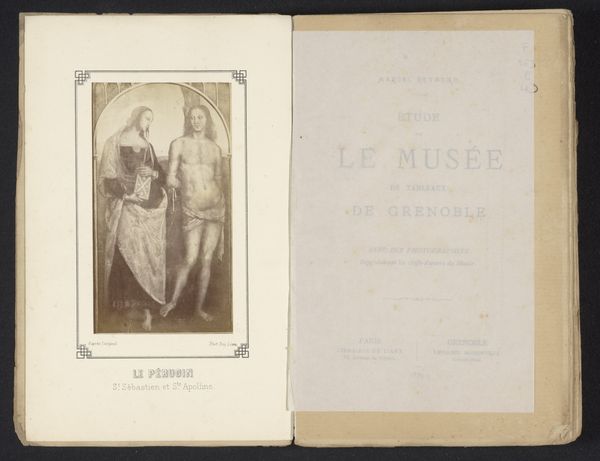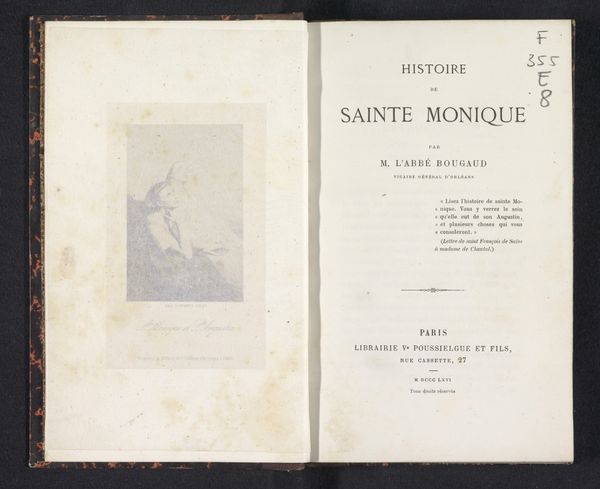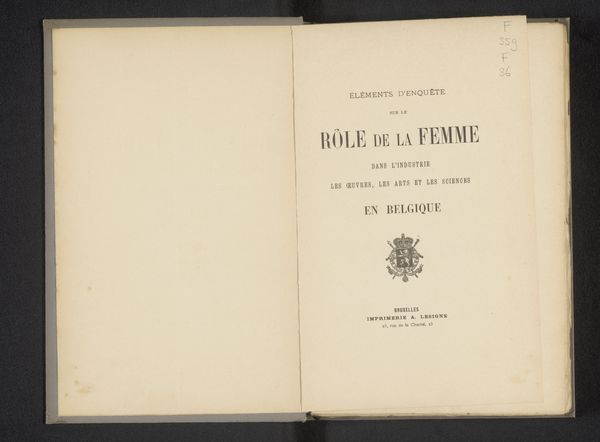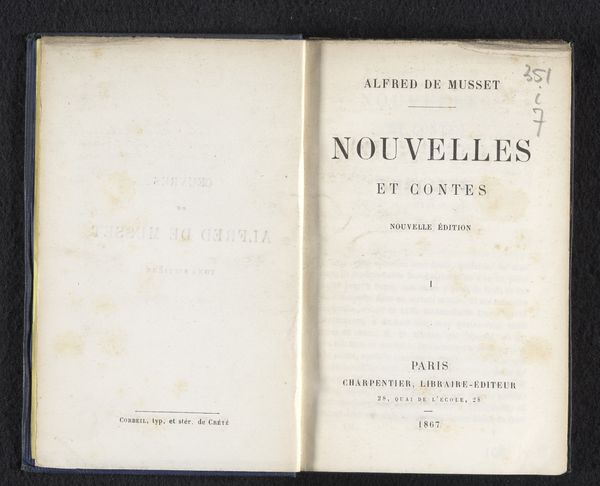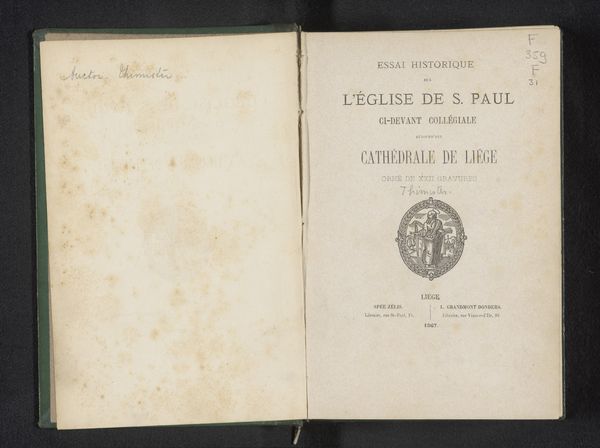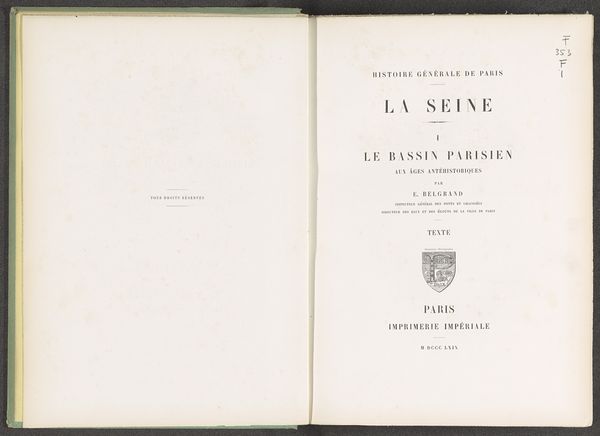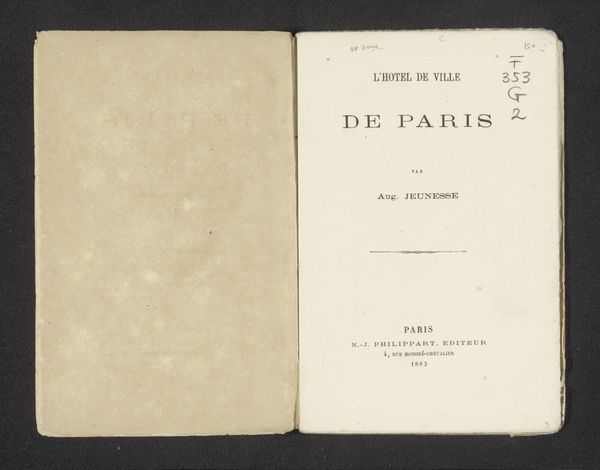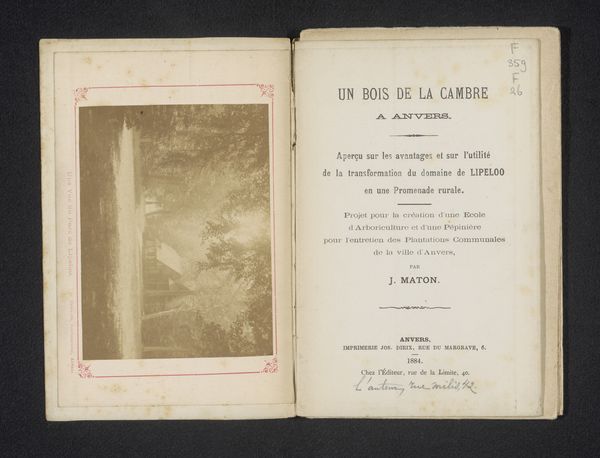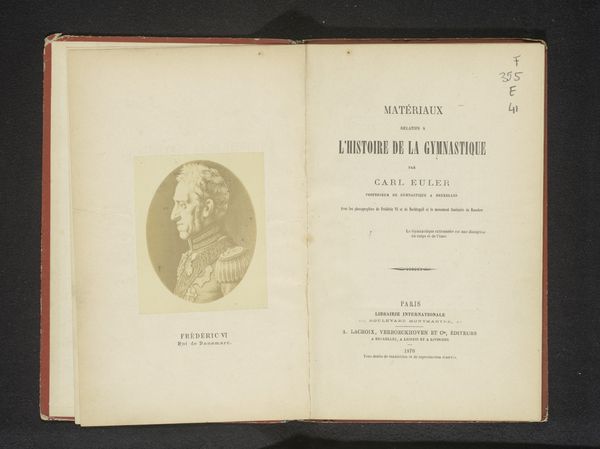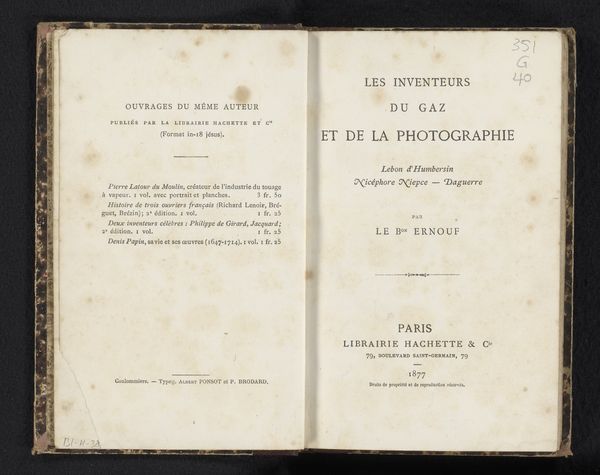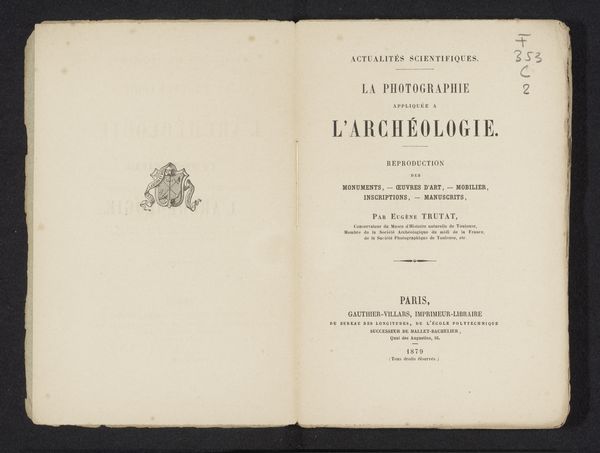
#
aged paper
#
sketch book
#
hand drawn type
#
personal sketchbook
#
hand-drawn typeface
#
journal
#
thick font
#
sketchbook drawing
#
handwritten font
#
sketchbook art
Dimensions: height 241 mm, width 156 mm, thickness 20 mm
Copyright: Rijks Museum: Open Domain
Curator: Oh, look at this old thing! It's the open pages of a sketchbook, probably about the size of my hand, with drawings and hand-drawn typeface... it smells like stories. Aged stories. Editor: You're catching whiffs of history! What we're viewing is titled "Étude sur le Musée de Tableaux de Grenoble" created in 1879 by Marcel Reymond. A study, quite literally, of the Grenoble Museum of Paintings. It appears to be the frontispiece of a journal? Curator: It’s melancholic. That front page, slightly yellowed with bold letters spelling out "Le Musée..."—it gives a very serious, academic feel. But, flip the page, and you’ve got this wispy, dreamlike sketch framed so precisely with these little borders; two figures almost fading into the ether... the juxtaposition gets my mind dancing. Editor: And it's such a conscious artifact; a monument made to the burgeoning notion of a "public museum" meant to refine public taste. Reymond is placing himself—his book—within that cultural conversation. You know, the 19th century really cemented the museum as a civic entity, not just for the elite. Curator: Oh, so it's practically political art! All that implied grandiosity... with these intimate, quickly made personal notations filling the journal pages. Someone sat with this—meditated. To imagine flipping through a hundred of these, page after page! Editor: Right, it makes you wonder: Who was Reymond, what was his perspective on art? He lived during a time when debates about national identity, artistic style, and accessibility were raging. To "study" a museum then meant entering that fray! Curator: Almost voyeuristic, flipping through another's intimate jottings! All this societal force, distilled into a man, in a room, making notes! One man’s experience with an evolving institution becomes, itself, a little institution. Editor: Well, I think what's compelling about Reymond's sketch, specifically, is it highlights the dynamic relationship between observer and the observed; he became another critical element in a museum experience now centuries in the making. Curator: What a charming glimpse into a past world, then! I feel changed; as though a museum of one’s own isn't as far away as one might suspect. Editor: Absolutely. A lovely piece showing how museums became vital not just for exhibiting art but for inspiring it.
Comments
No comments
Be the first to comment and join the conversation on the ultimate creative platform.
